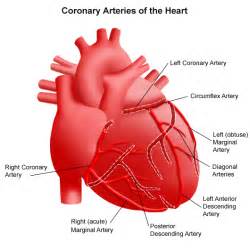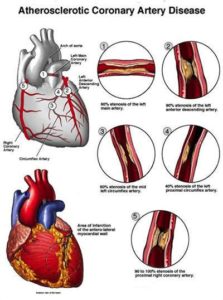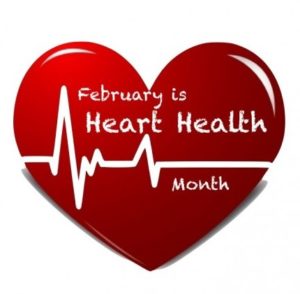Coronary artery disease develops when the major blood vessels that supply your heart with blood, oxygen and nutrients (coronary arteries) become damaged or diseased. Cholesterol-containing deposits (plaque) in your arteries and inflammation are usually to blame for coronary artery disease.
To better understand how CAD operates here is a metaphor like when we drive our car if our transmission is temporarily blocked the engine struggles to operate ( Just like in this disease CAD you get symptoms or no specific symptoms with resulting to struggle to do your activities of daily living)with a temporary block and definitely a complete block). Ending probem with CAD the you need the blockage resolved so the blood can get 100% oxygen from our lungs (they provide blood oxygen to the red blood cells that provide this nutrient to our tissues to stay alive–without it our body goes through starvation=no oxygen to tissure=pain like angina). So again as a metaphor using the car, the engine of the body is the heart, the transmission of the body is the lungs (one can’t live without the other) and the kidney system ( that filters our blood removing toxins from it to keep our blood stream cells clean) that would be the oil system of the car. All the systems have a function that relate to the body in keeping it alive. If oxygen is deprived long enough or toxins just continue to build up in our body it will die without resolution to getting back to normal or providing some oxygen or removing some toxins of the body like through hemodialysis for exampte.
Signs and Symptoms of CAD:
Because coronary artery disease often develops over decades, you might not notice a problem until you have a significant blockage with or without specific symptoms to even a heart attack. Remember many heart attacks can be silent: that is why at a certain age we should be having a 6mth or yearly check up by a cardiologist (the expert) but if your insurance doesn’t cover a referral than go to your general doctor for a yearly physical or sooner. But there’s plenty you can do to prevent and treat coronary artery disease. A healthy lifestyle can make a big impact on prevention or even help treating CAD.
Women are somewhat more likely than men are to experience less typical signs and symptoms of a heart attack, such as neck or jaw pain. Sometimes a heart attack occurs without any apparent signs or symptoms.
Remember:


